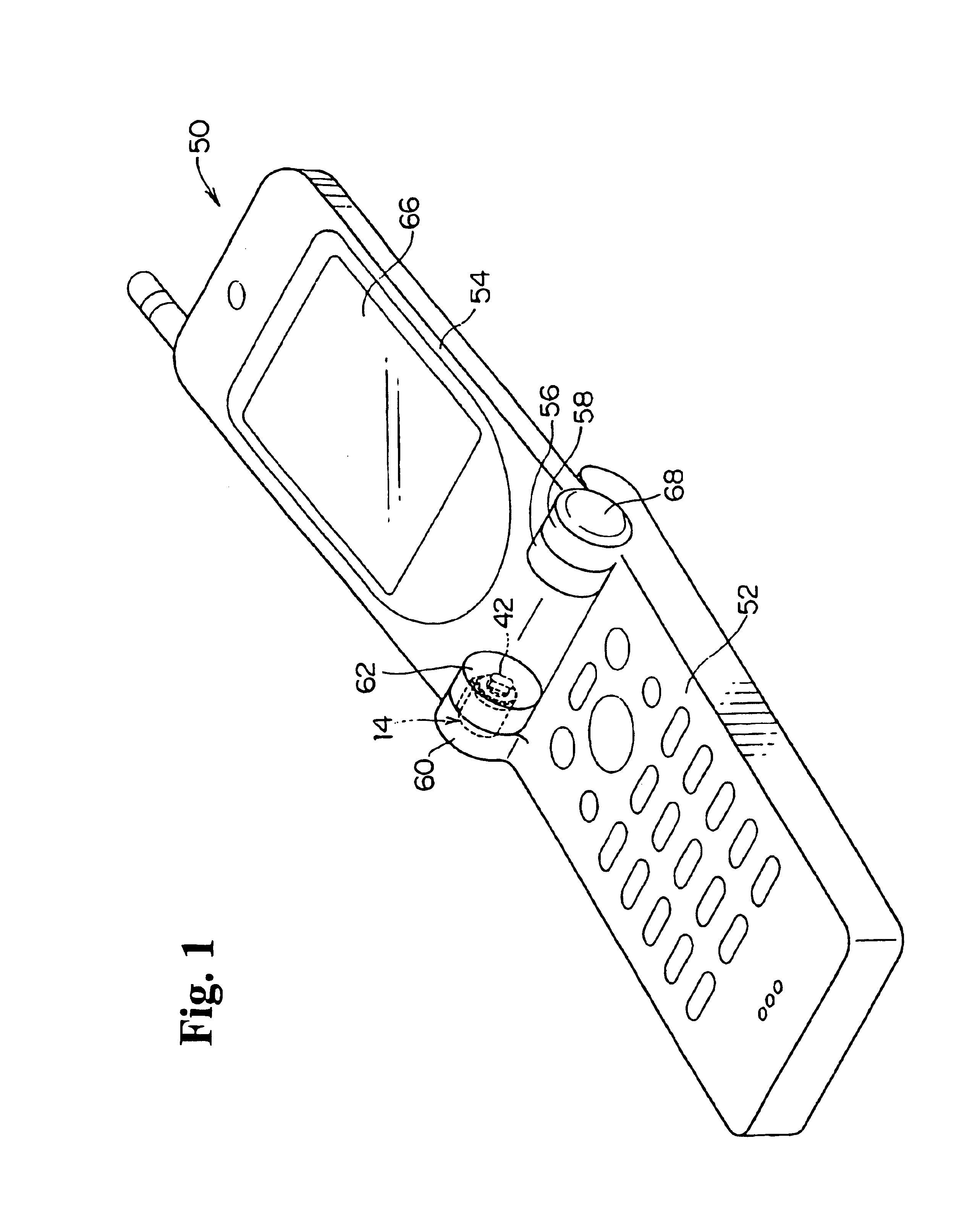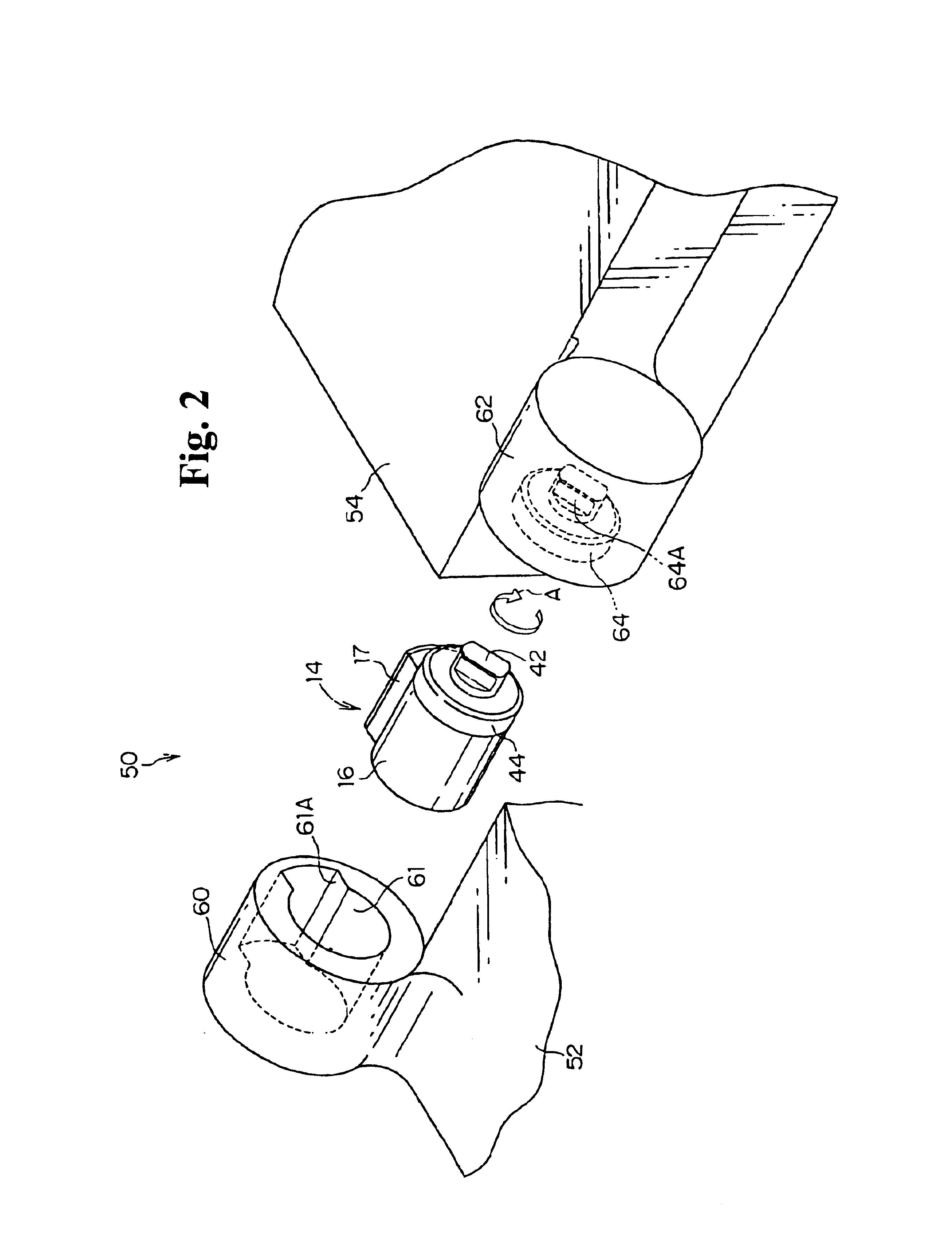Damper
a damper and front-end surface technology, applied in the field of dampers, can solve the problems of increasing the number of parts and assembling work, increasing the cost, etc., and achieve the effects of increasing the braking force of the damper, and reducing the number of parts
- Summary
- Abstract
- Description
- Claims
- Application Information
AI Technical Summary
Benefits of technology
Problems solved by technology
Method used
Image
Examples
Embodiment Construction
[0043]Hereunder, a damper according to an embodiment of the present invention will be described.
[0044]FIG. 1 shows a mobile phone 50 to which a damper 14 according to the present embodiment is applied. The mobile phone 50 is formed of a transmitting-side main portion 52 and a receiving-side main portion 54. The mobile phone 50 includes a pair of shaft portions 56, 58 and 60, 62. Therefore, the receiving-side main portion 54 can rotate with respect to the transmitting-side main portion 52, so that the mobile phone 50 is folded in a state that the receiving-side main portion 54 is closed.
[0045]A spring, not shown, is provided at a side of the shaft portion 56, 58 for urging the receiving-side main portion 54 in a direction to open with respect to the transmitting-side main portion 52. On the other hand, a damper 14 is provided at a side of the shaft portion 60, 62, so that a braking force acts on opening of the receiving-side main portion 54.
[0046]Next, a structure of the damper 14 wi...
PUM
 Login to View More
Login to View More Abstract
Description
Claims
Application Information
 Login to View More
Login to View More - R&D
- Intellectual Property
- Life Sciences
- Materials
- Tech Scout
- Unparalleled Data Quality
- Higher Quality Content
- 60% Fewer Hallucinations
Browse by: Latest US Patents, China's latest patents, Technical Efficacy Thesaurus, Application Domain, Technology Topic, Popular Technical Reports.
© 2025 PatSnap. All rights reserved.Legal|Privacy policy|Modern Slavery Act Transparency Statement|Sitemap|About US| Contact US: help@patsnap.com



